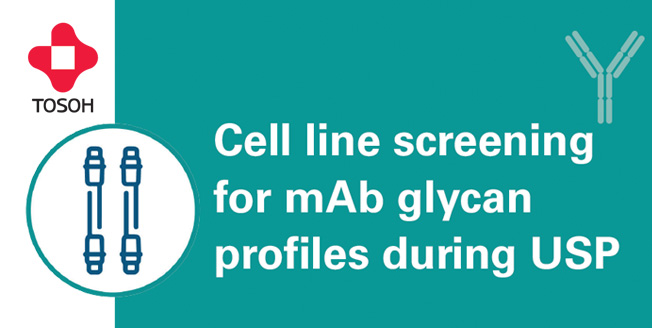
Fc-glycans of therapeutic antibodies are known to play an important role in the recognition of antibodies by the FcγIIIa receptor. Accordingly, Fc receptor affinity-based separation is also correlated to the N-glycan profile. The TSKgel® FcR-IIIA-NPR affinity chromatography column uses an Fc receptor modified by site-directed mutagenesis to create a ligand with greater stability.
A thirty-minute analysis (Figure 1) gives valuable first information on the distribution of glycoforms and expected ADCC (antibody-dependent cell-mediated cytotoxicity)of analyzed mAb samples. This fast and efficient method can be applied to purified samples and supernatant alike and can therefore be used in many phases of development and production: cell line screening in early R&D, biosimilar/ originator comparison, upstream development and optimization, monitoring of glycoengineering, or lot-to-lot comparison in QC.
This application note discusses the correlation of TSKgelFcR-IIIA-NPR elution profiles and mAb glycan structures determined by hydrophilic interaction liquid chromatography (HILIC) during a monoclonal antibody upstream process optimization. The glycan profiles that are mentioned throughout this application note are shown in Figure 2.





